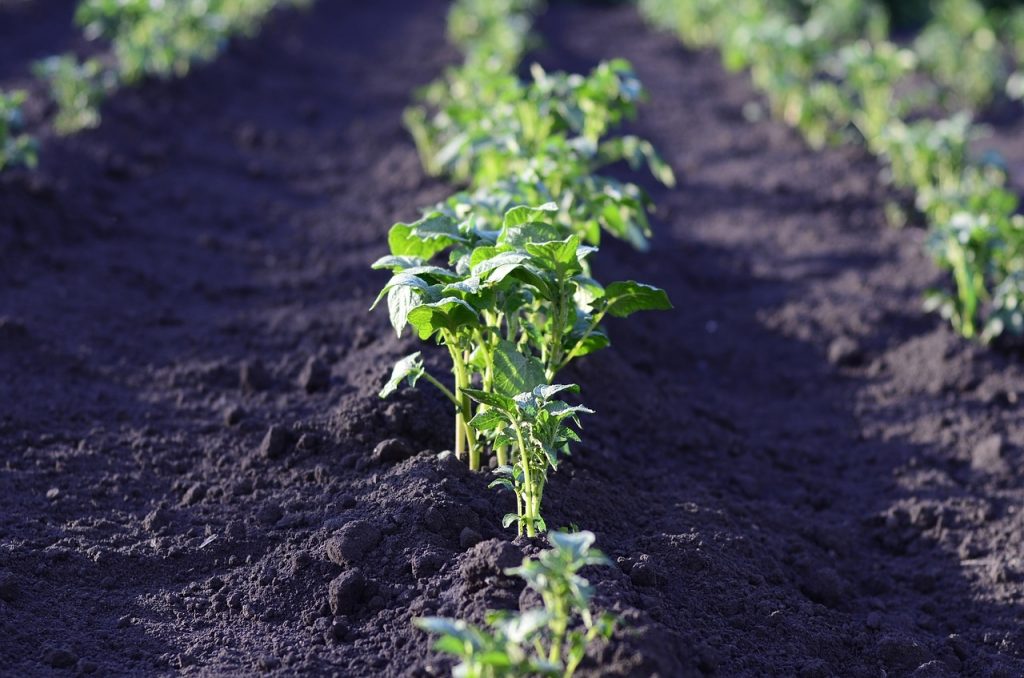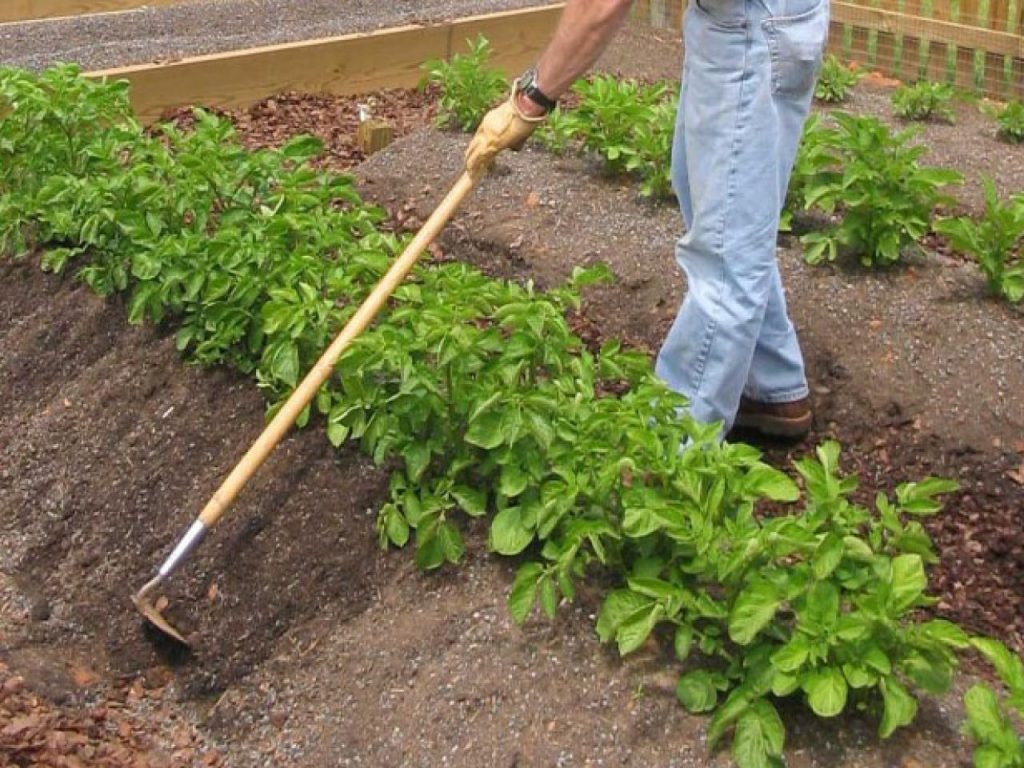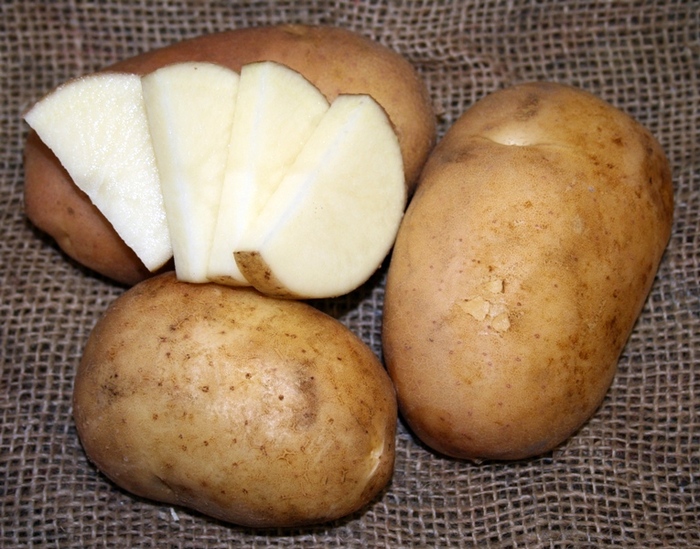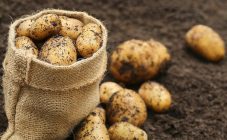Content:
Potatoes are a crop that can be found in almost any Russian garden plot, since it is one of the most significant food crops.
Description of culture
Potatoes are an annual tuberous plant that reproduces vegetatively. The culture belongs to the Solanaceae family. A potato bush consists of several stems and can form from 5 to 15 tubers, depending on varietal characteristics.
The aboveground mass of the plant is important in the formation of tubers. The root system of potatoes is relatively shallow - up to about 60 centimeters. Tubers are modified shoots that form on underground crop stems. Potatoes can differ in their size, shape, color, taste and a number of other significant factors.
The demand for the heat indicator in the culture is average. But at temperatures up to +5 degrees and above +35, its growth stops. What no potato variety can stand is freezing. For flowering, the optimal temperature range is from +18 to +21 degrees. Tubers are best formed when the temperature of the posts is from +15 to +19 degrees.
Potatoes are very moisture-loving crops. The culture is very supportive of light planting areas and loose fertile soil. The most extensive harvest is obtained on well-fertilized chernozem loams and sandy loams with an average acidity.
For economic purposes, all varieties of crops are divided into two large groups: dining and universal. Table varieties are characterized by the correct shape of the tuber with a relatively small number of small eyes, excellent taste and good keeping quality. Their flesh does not darken either before or after heat treatment. The starch content in table varieties can range from 10 to 16%.
When is the best time to plant potatoes
One of the most significant factors, which largely determines the abundance of the harvest at the end of the season, is the choice of the correct planting date. If this parameter is taken into account correctly, the chances of achieving a record yield increase significantly. Many people try to time the planting of potatoes for the May holidays. Such a decision most often turns out to be associated not so much with the fact that these are the optimal planting days for potatoes in May, but with the presence of a large amount of free time. This approach is fundamentally wrong. If by this time the morning frosts are still holding, it is worth postponing the sowing work.
Most gardeners planning to grow potatoes ask a very reasonable question: how to plant potatoes and when it is best to do it. Despite the fact that there is no unequivocal recommendation as to when to plant potatoes, certain algorithms for determining favorable days for planting potatoes still exist and are actively practiced.
Lunar landing
Many gardeners, choosing an opportune moment for planting crops, use the lunar calendar. This is completely justified. It's no secret that the moon and its cyclical nature have a significant impact on all living organisms without exception. It is not only about people and animals, but also about plants.
Experienced gardeners insist that if the crop was planted on an unfavorable lunar day, despite proper care and thorough adherence to agricultural technology, the harvest will be more modest. In some cases, the bushes may even die. Believe in such signs or not, everyone's personal business, but once again it will not hurt to play it safe.
Since there are a lot of lunar calendars and their interpretations at the present time, choosing which one is best to use is not even worth starting. A good way is to study all the available information and generalize.
Favorable days for planting potatoes in April, May or June are the days of the waning moon (for land crops, on the contrary, the growing one). In the last two (third and fourth) quarters of the lunar cycle, the formation of tubers and root system is especially good. In no case should you plant potatoes during the full moon and new moon.
For example, there are the following lunar signs:
- if the defective moon is in Libra, this is a kind of guarantee of the fertility of the potato and its resistance to most diseases;
- if you plant a culture in the ground, when the flawed moon is in Scorpio, planting will give quick shoots, and their root system will grow especially quickly;
- if the defective moon is in a sign like Capricorn, landing on such a day will accelerate the formation of both the ground and underground parts of the plant; potatoes will not sprout too quickly, but at the same time;
- if the flawed moon is in the sign of Pisces, the potatoes planted under this sign will be especially tasty and boiled (but they will not be stored for long and will not be suitable for seeds);
- if the flawed moon is in the sign of Cancer, the harvest will turn out to be very tasty and plentiful, this is the most fertile sign, etc.
Choosing the optimal planting days in May or April and wondering if it is possible to plant potatoes on a full moon, you can never rely solely on the lunar calendar. To properly plant a crop and get a good harvest, you will need to take into account a number of diverse factors.
Influence of potato variety on planting dates
Choose the month you need for planting: April, May or June, after the potato variety has been selected and the planting material has been prepared. Today, early, medium and late varieties of crops are available for planting, each of which has its own recommendations regarding the timing of planting in open ground. The fact of the landing method should also be taken into account.
There are several of them:
- under the straw;
- under a shovel (traditional method);
- in the furrows after the walk-behind tractor;
- seedlings;
- in greenhouses.
So, for example, planting in a heated greenhouse can be carried out without regard to the weather in the first month of spring. The straw method allows you to plant a crop a couple of weeks earlier than in furrows or under a shovel.
Temperature requirements for planting dates
Despite the fact that growing potatoes is not difficult even for not too experienced gardeners, due to the unpretentiousness of the culture, there are certain requirements for planting it. In particular, the plant reacts very negatively to both sudden temperature changes and night frosts.As a result, in order to get a good harvest, planting should not be carried out when the calendar spring comes, but when the soil and air have time to warm up sufficiently. To do this, for at least one month, the air temperature should not go into minus. The soil must have time to heat up to at least +6 degrees in the southern regions of the landings and up to +10 in the northern ones. Such a difference in temperatures is due to the fact that in the southern regions of our country, the depth of soil freezing is significantly less than in the northern regions.
The timing of planting also depends on the humidity indicator. Potatoes do not tolerate high humidity very well. Because of it, at best, the shelf life of tubers will be significantly reduced, and at worst, the crop will rot at the root. Likewise, overdried soil is unsuitable for planting. In connection with the above, when planning the date of planting, it is necessary to put in the list of works and the procedure for preparing the site for sowing. The soil must be plowed and moist.
If you plant potatoes at too low a temperature, you will not have to wonder where to put your crop at the end of the season. At best, potatoes will give few shoots, and at worst, they will freeze completely. And the year will turn out with a zero harvest. Particularly careful with planting should be done in the month of April - at this time the temperature drops are especially serious and unpredictable.
Climatic conditions during landing
As already mentioned, the time when you can start planting potatoes should be calculated taking into account weather conditions. The main requirement is that the weather during planting of potatoes should be as stable as possible, without serious changes. It is imperative to take into account the climatic features of the region and select suitable varieties. So, for example, in central Russia, in Bashkiria, you can plant potatoes from the second decade of May, in the Urals and Siberia - closer to June, etc.
In the southern regions, potatoes can be planted as early as April. Moreover, in such regions as the Kuban, Krasnodar Territory and Crimea, there is every opportunity to collect not one, but two crops in a year. So, in some cases, sowing work begins in March.
Folk omens when planting potatoes
Sometimes folk wisdom is also useful when choosing the date of planting. Many experienced gardeners are guided not only by the weather and the lunar calendar, but also by some folk signs. So, for example, it is recommended to plant early potato varieties after the first foliage appears on the birches. The age-old wisdom recommends placing middle and late varieties in open ground after the bird cherry blossoms.
Some people are skeptical about such signs and do it completely in vain. Our ancestors successfully cultivated the same potato for centuries and did not have forecasters' forecasts even for a couple of days in advance. They were guided by the signs that nature itself gave them. And, as a rule, there were no mistakes in this case.
The dangers of landing on a bad day
Of course, no one will argue that the crop planted before the moon begins to wane, will rot on the vine or will not be able to germinate. But the influence of the moon on plants is a fact proven by scientists. For this reason alone, on a new moon and a full moon, it is better not to rush with sowing work.
Lunar calendars should not be trusted unconditionally either. Even if such an information resource promises an unprecedented harvest of potatoes when planted on May 5, and the weather conditions do not contribute to this at all, it is better to postpone the planting to another day.If the weather conditions are optimal, and even coincide with favorable days in the lunar cycle, you can, without a doubt, start sowing work.
Any process should be approached thoughtfully. Planting potatoes is no exception to the rule.













